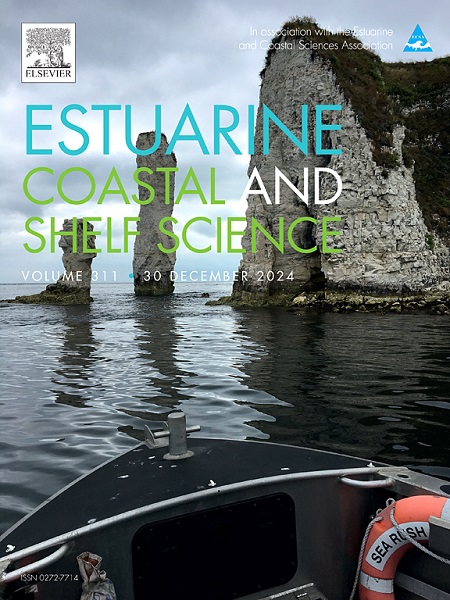Marine heatwaves effects on quantity, composition, and turnover of sedimentary organic matter in a Mediterranean coastal lagoon: A benthocosm study
IF 2.6
3区 地球科学
Q1 MARINE & FRESHWATER BIOLOGY
引用次数: 0
Abstract
Marine heatwaves (MHWs), caused by climate change, are becoming increasingly frequent and more intense, impacting benthic marine ecosystems. Nonetheless, knowledge about MHWs effects on the sediment biogeochemistry of coastal lagoons are almost unknown. We show that MHWs of different intensity (+4, +8 °C) simulated in benthocosm altered quantity, biochemical composition and nutritional quality of sedimentary organic matter obtained from a Mediterranean coastal lagoon. Sedimentary contents of carbohydrates, chlorophyll-a, and total phytopigments and biopolymeric C decreased significantly (by ca. −25, −37, −34, −15 %, respectively) already at +4 °C; at +8 °C those changes were accentuated for almost all variables (by −34, −48, −50, −14 %, respectively), including lipids (by −16 %), ultimately causing a drop in the nutritional quality of food for the benthos. This was plausibly the result of interacting (possibly synergistic) factors including the decay of labile molecules exposed to warmer conditions, an increased consumption due to the stimulation of heterotrophic activity by warmer temperatures, and an increased degradation (up to 31 % at +4 °C) due to the stimulation of extracellular enzymes. We can anticipate that more frequent, intense and long-lasting MHWs will influence at large sedimentary biogeochemistry in coastal lagoons and their ability to store blue C. However, since our experiments did not control for other factors possibly interacting at the microscale (e.g. microbial communities’ responses to warming and hypoxia), we foster the need of further studies to disentangle the effects of MHWs from those of other climatic stressors.

求助全文
约1分钟内获得全文
求助全文
来源期刊
CiteScore
5.60
自引率
7.10%
发文量
374
审稿时长
9 months
期刊介绍:
Estuarine, Coastal and Shelf Science is an international multidisciplinary journal devoted to the analysis of saline water phenomena ranging from the outer edge of the continental shelf to the upper limits of the tidal zone. The journal provides a unique forum, unifying the multidisciplinary approaches to the study of the oceanography of estuaries, coastal zones, and continental shelf seas. It features original research papers, review papers and short communications treating such disciplines as zoology, botany, geology, sedimentology, physical oceanography.

 求助内容:
求助内容: 应助结果提醒方式:
应助结果提醒方式:


